Putul Naach – Preserving the lost art of Doll Making, by Chalchitra Academy
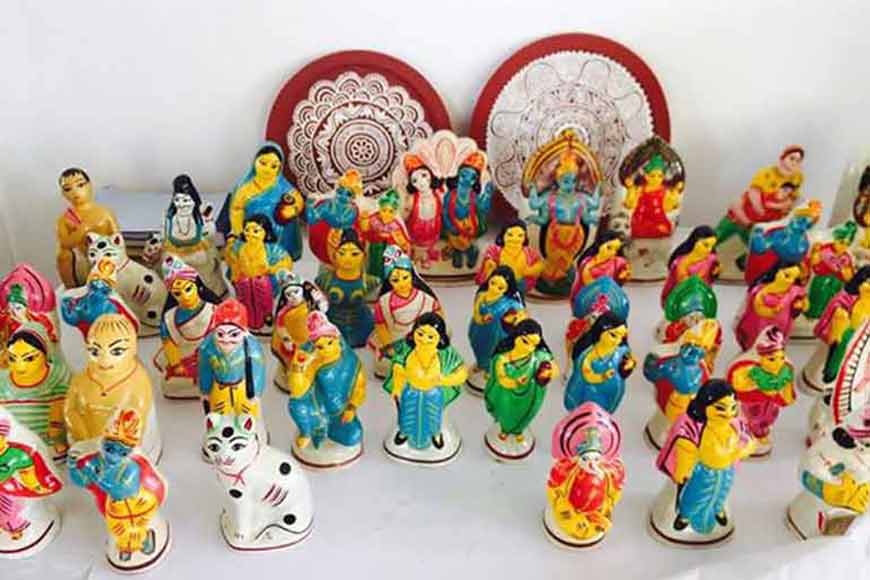
These dolls do not dance or make facial expressions, they are static, rustic, yet charming, carrying a legacy of art and crafts tradition of Bengal down centuries. The Gala Putul and Babu Putul of Bengal reflect a lost era, they carry the simple charm of rural Bengal, they tell stories, they preserve folk art. But in the era of internet and video games, children no more play with dolls, either in the villages or cities of India. No wonder such doll making art is fast vanishing hence. But Chalchitra Academy in collaboration with Charuchetona is trying to revive that lost art. They are organizing a two-day joint workshop to disseminate the knowledge of Bengal’s traditional doll making at Khwaabgaon II (Konedoba Village) in Jhargram between 27th - 28th January.
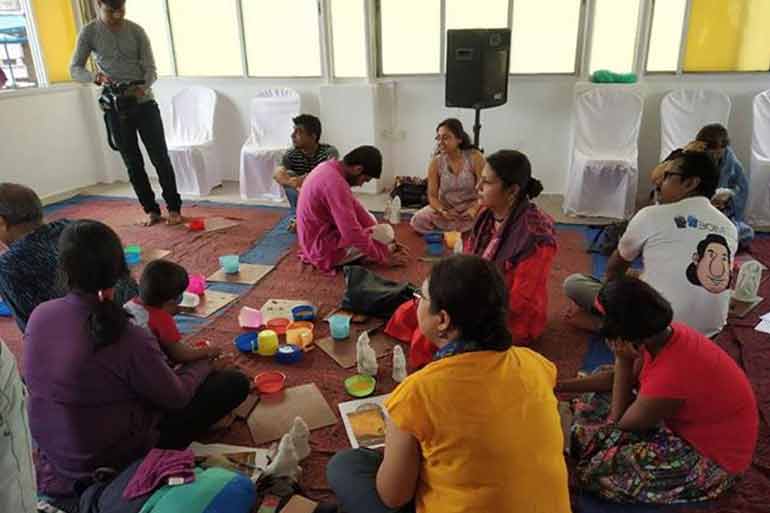
“Titled Putul-Khela, this is part of our academy’s ongoing capacity-building workshop series called Sanglap (Dialogue), that aims to preserve Bengal’s rich indigenous artistic heritage by training individuals from lesser privileged rural communities,” said Mrinal Mandal who has been striving since the last few decades to bring back different rural and folk art forms of Bengal. In this workshop, sexagenarian Sri Brindaban Chanda of Patashpur, East Medinipur, will be sharing his knowledge about Shellac Doll (Galar Putul) making, while Sri Shambhu Nath Das will teach the art of Babu Dolls (Babu Putul) that are native to Joynagar-Majilpur area of South 24 Parganas. Both are the last torch bearers of these folk art forms which are on the verge of extinction.
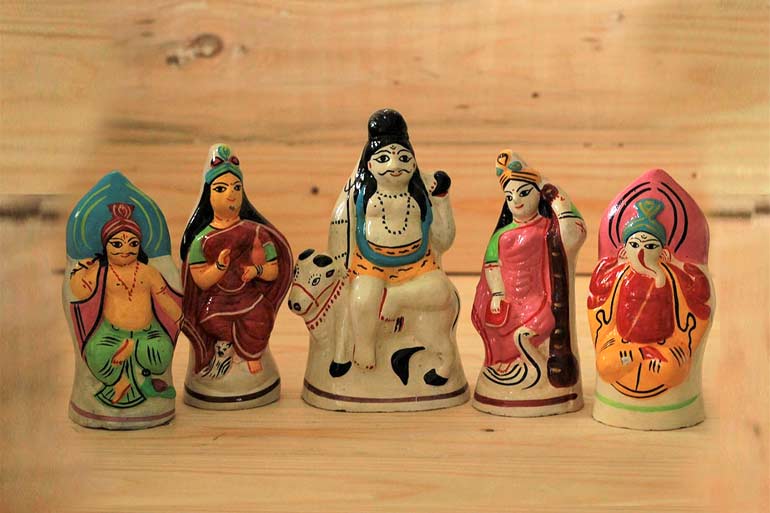
Dolls have always played an integral role in the socio-cultural life of Bengal. They have been of much importance in many local festivities. The dolls of Bengal, irrespective of their medium of production, are not only meant as decorative objects or play articles, rather many such forms are actually treated as a part of liturgy. The dolls encode beliefs, tradition and facets of Bengal’s multi-ethnic history. “The process in which these dolls are made are not easy. They need time, patience and days to finish. The apparently simple looking Shellac Dolls of Medinipur are created by a complex process that could only be mastered through years of practice and observation. The primitive looking forms are traditionally made from clay, sourced from termite nests. The clay is further processed by soaking it in water for days to get rid of impurities. The soft clay is hand pressed and sunbaked before getting transformed into terracotta over a small oven fired by cow dung cakes. Then the slowly heated and melted shellac is applied to colour the surface. The surface is further decorated using coloured threads of lacquer,” mentioned Mandal.
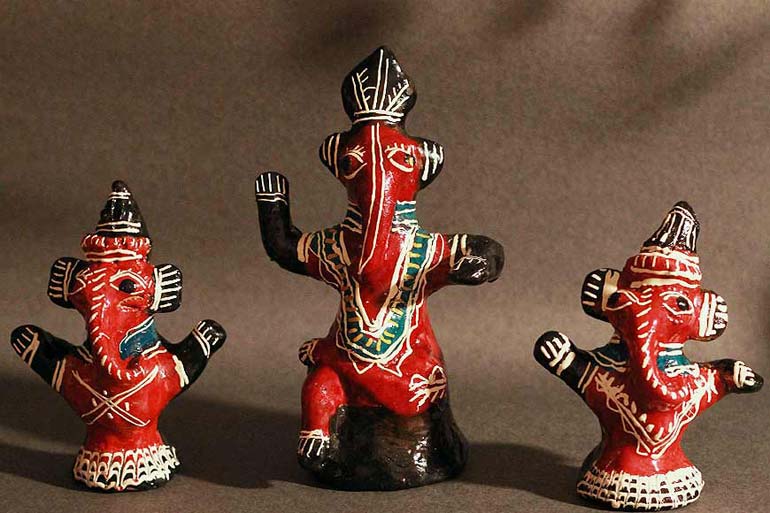
Interesting zoomorphic and anthropomorphic shapes are thus created, which are used for ritualistic as well as non-ritualistic purpose. The Babu Dolls of Joynagar-Majilpur area are still thriving at the hands of Sambhu Nath Das, who learned the art from his legendary grandfather artist Late Sri Manmatha Nath Das. This art dates back to 18th century when Shambhu’s ancestor Sri Kalicharan Peyada aka Das, migrated from Jessore to West Bengal, accompanying the Zamindar family, where he was employed. His passion for doll-making for the kids of the Zamindari household, soon transformed into a full-time profession. These dolls speak about the syncretic culture of Bengal that also reflect our colonial past. Apart from images of folk deities like Bono-Bibi, Dakhin-Roy and Kalu Roy, figurines mimicking the upper-class Babus and Bibis, Saheb and Memsaheb, village maiden with pitcher to Burqa-clad equestrian Muslim female forms, several interesting forms are created.
Once modelled by hand, today the main forms are created in clay using traditional mould. The forms are fired and then painted by hand, which has a close connection with the Kalighat Patas. Babu-putul and the similarities between the traditions of pata-painting of Kalighat and Majilpur is quite surprising. But as society merges, history does too. Like roots of Harappa and bronze-age Rarh merge with the Tepa and Hengul statuettes of rural Bengal, traditions of simplicity emerge hand-in-hand with figurines of a redcoat British police and a burqa-clad bibi on a horse. Or a drunken Babu and his wife stand beside a “gorāsāheb” and his “mem.” Somewhere a Babu proudly twirls his walking-stick. All these reflect the social structure of the bygone eras too and hence are great story tellers.
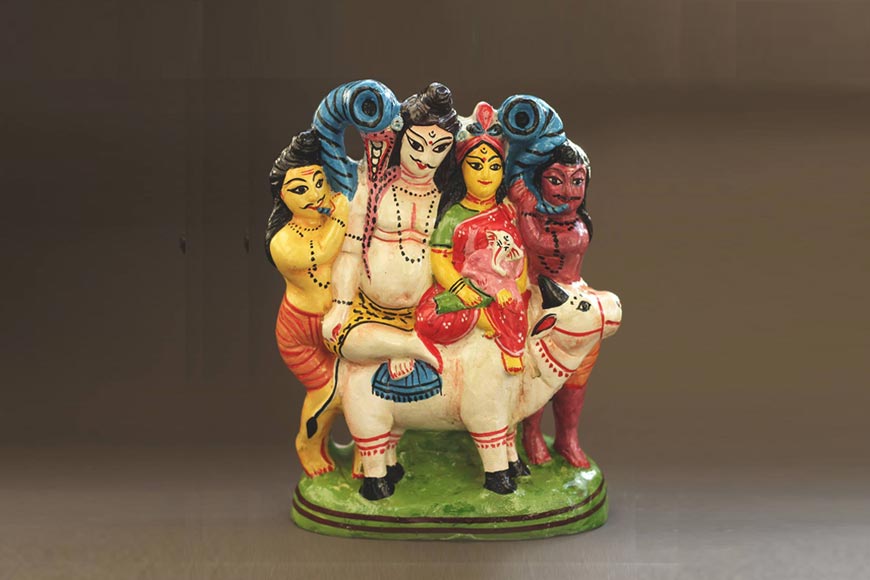
Majilpur is a city known for making exquisitely crafted fired clay dolls. The area came to be known as Majilpur in the 17th century. The diversity found in Majilpur Dolls is very interesting. Almost 200 years back, the zamindar family of Duttas from Jessore, Bangladesh, came to Majilpur and started living there. Kalicharan Peyada, who was the security personnel of the zamindars had a special talent. He could craft spectacular idols and dolls made of clay. Tepa putul or hand pressed doll crafted by him was truly a creation to marvel at. Janakinath Das, was the descendant of Kalicharan Das whose son, Harinath Das started this legacy of crafting Majilpur dolls. This unique craftsmanship was passed on to Manmath Das, who carried forward the legacy with great expertise. He also received the President’s Award in 1986 for his magnificent creation of Jaganath, Balaram and Subhadra.
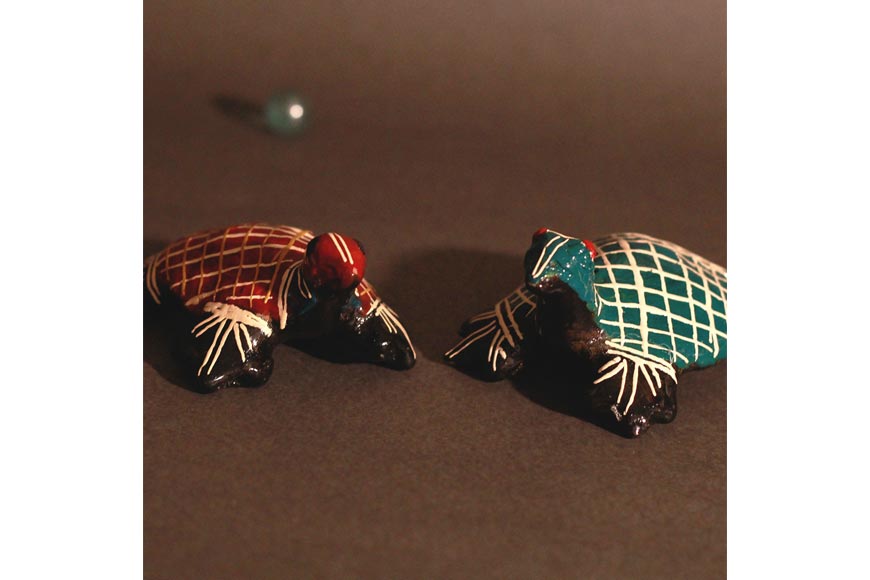
Panchu Gopal Das was another notable artist who made many dolls of this genre which especially include the local deities. Presently, this particular genre of dolls is on its last legs. Shambu Das, the grandson of artist Manmath Das, is the only artist who is striving to keep this art form alive. The dolls crafted in Majilpur look full of life and vibrant because of the use of colours. Garjan oil, further enhances the lustre of these dolls. In the yesteryears, many Majilpur dolls were crafted to mock the arrogance and superficiality depicted in the Babu culture. These dolls have a huge popularity even today. Deities like Radhakrishna, Kaliyadomon, Jogoddhatri, are also subjects of Majilpur clay dolls.
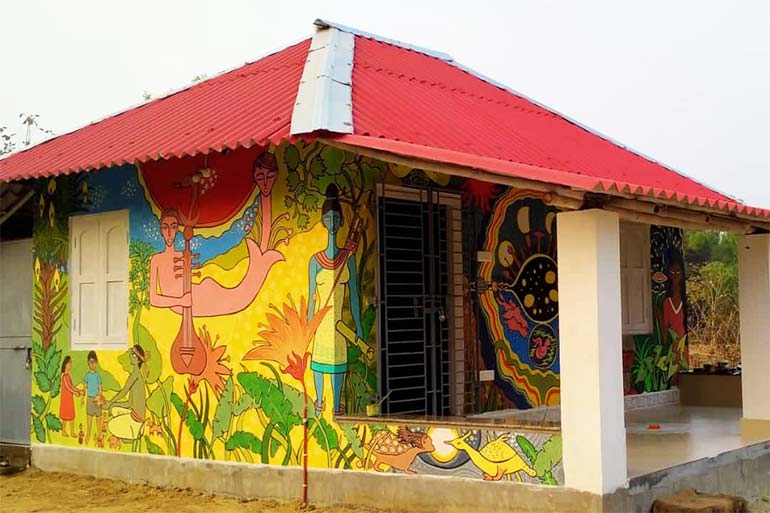 Chalchitra Academy's new building at Khoabgaon
Chalchitra Academy's new building at Khoabgaon
Chalchitra Academy is relentlessly working towards raising awareness about our dying heritage and helping artists to navigate the new market forces that threaten their existence. Through these workshops, Chalchitra Academy is also creating archives in both tangible and intangible formats, for the sake of our posterity.











